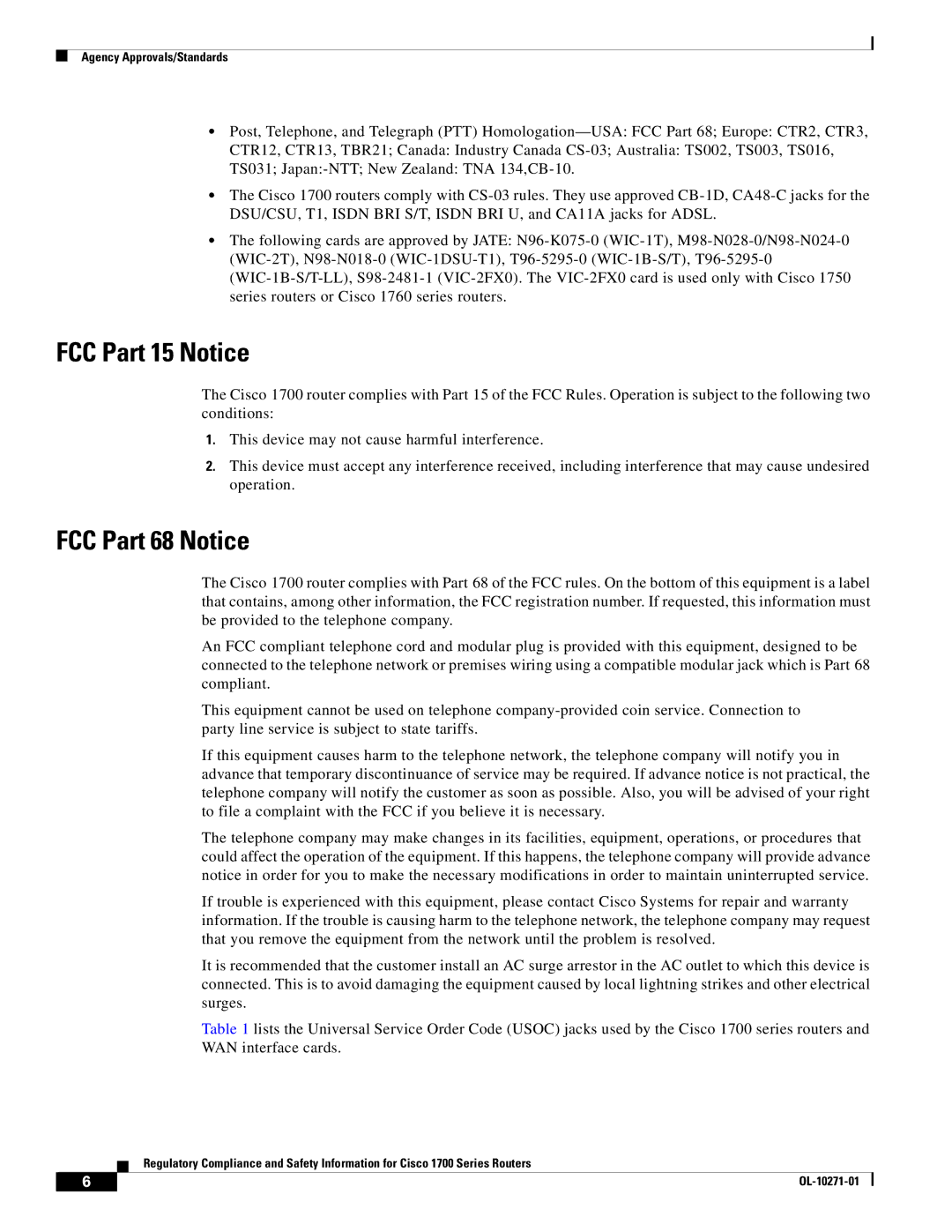Cisco 1700 specifications
Cisco Systems has been a leader in networking technology for decades, and among its extensive product lineup is the Cisco 1700 series routers. Introduced in the late 1990s, the Cisco 1700 series is designed to provide flexible, reliable, and secure connectivity for small to medium-sized businesses and branch offices. These routers offer a balance of performance and capability, making them an attractive choice for organizations looking to enhance their networking infrastructure.One of the main features of the Cisco 1700 series is its modular architecture. The routers come with various slot options that allow users to customize their devices according to specific networking needs. This modularity enables enterprises to add features such as additional interfaces or Enhanced Service Modules (ESMs) as their networking requirements evolve. This means businesses can invest in a powerful router that can grow alongside their needs.
Another notable characteristic of the Cisco 1700 series is its comprehensive support for both data and voice services. It allows organizations to implement converged networks that support voice over IP (VoIP) applications, helping to streamline communication processes within businesses. With its Quality of Service (QoS) features, Cisco 1700 ensures that voice traffic is prioritized over less critical data flows, providing users with clear voice transmission and reducing latency.
The Cisco 1700 also incorporates a range of security features to safeguard data. It supports advanced firewall capabilities and can be configured with Virtual Private Network (VPN) options for secure remote access. This focus on security is essential in today's environment, where cyber threats are increasingly sophisticated.
Additionally, the Cisco 1700 series is equipped with the Cisco IOS operating system, which provides a comprehensive suite of networking commands and features. This includes advanced routing protocols, NAT (Network Address Translation), and a variety of dynamic routing options. Users benefit from a streamlined interface that allows for the easy configuration and management of network settings.
The routers also support various connectivity options, including multiple WAN interfaces, such as T1 or DSL connections, which facilitate easily accessible internet options. Coupled with its robust performance and reliability, the Cisco 1700 series remains a strong choice for organizations seeking to upgrade their communication infrastructures.
In summary, the Cisco 1700 series routers embody versatility, security, and performance. With their modular design, support for advanced voice and data services, and comprehensive security measures, they provide small to medium-sized businesses with a reliable solution to meet their networking needs. As enterprise requirements continue to grow, Cisco's 1700 series stands out as a dependable choice for achieving connectivity and operational efficiency.

